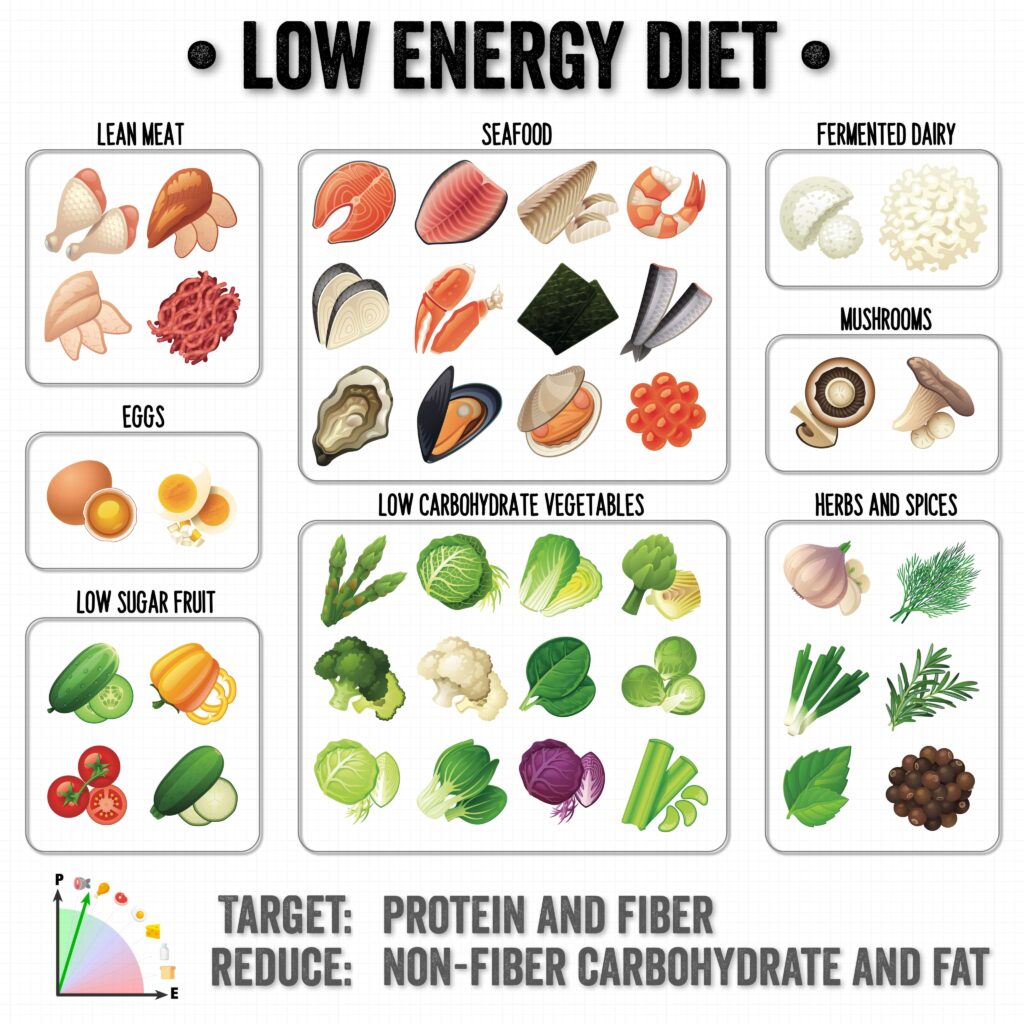June 21, 2021 by Marty Kendall
Category: Life
Low Energy Diet
courtesy of Dr Ted Naiman https://www.lowenergydiet.com/

A *LOW ENERGY DIET* consists of whole foods but avoidance of foods high in REFINED DIETARY ENERGY such as REFINED CARBS (sugar, flour), REFINED FATS (oil, butter), and ALCOHOL (also pure refined energy).
A Low Energy Diet provides higher satiety per calorie and allows you to store less energy for the same level of satiety, meaning you can eat intuitively to fullness and still lose excess body fat.
vipassana meditation
Vipassana, which means to see things as they really are, is one of India’s most ancient techniques of meditation.
Vipassana was rediscovered by Gotama Buddha more than 2500 years ago and was taught by him as a universal remedy for universal ills, i.e., an Art Of Living. This non-sectarian technique aims for the total eradication of mental impurities and the resultant highest happiness of full liberation.
Continue reading “vipassana meditation”The Joy of Free Book Summaries
Life is so fast now we don’t have to read a book from start to finish. We rush everywhere, binge watch TV, eat fast food and multitask our lives away. There are so many books out there and so little time. We have the Fear of Missing Out (FOMO) so now there are summaries of books we can read or listen to on any of our devices.
If you are unable to handle the Joy of Missing Out (JOMO) then here is a list of sites with book summaries. Of course it’s not the same as reading the book. Note that whomever wrote the summary is using what THEY think is important or key based on their life, their understanding, their upbringing and their teaching. Still its another way to learn new ideas and ripple your mind.

These are great for whatever device you use… I use a google chrome extension and send them to my kindle for reading later.
Continue reading “The Joy of Free Book Summaries”Karma…it is what it is
Do you believe in Karma? Karma = action
One can think of karma as the spiritual equivalent of Newton’s Law of Motion. “For every action there is an equal but opposite reaction.” When we exhibit a negative force in thought, word, or action, that negative energy will come back to us.
The 12 Laws of Karma Everyone Should Know!
1. The Great Law or The Law of Cause & Effect – As you sow, so shall you reap. To receive happiness, peace, love, and friendship, one must BE happy, peaceful, loving, and a true friend.
Whatever one puts out into the Universe will come back to them.
2. The Law of Creation – Life requires our participation to happen. It does not happen by itself. We are one with the Universe, both inside and out.
Whatever surrounds us gives us clues to our inner state.
Surround yourself with what you want to have in your life and be yourself.

Learn the Lost Art of Rhetoric
The Art of Manliness Podcast #639 artofmanliness.com • August 31, 2020
For thousands of years, the study of rhetoric was a fundamental part of a man’s education. Though it ceased to be commonly taught in the 19th century, it’s an art well worth reviving in the modern day.
Meet Jay Heinrichs– he’s an expert in language and persuasion and the author of Thank You for Arguing: What Aristotle, Lincoln, and Homer Simpson Can Teach Us About the Art of Persuasion. Jay explains what rhetoric is, why after being taught around the world for centuries it fell out of favor as a component of education, and why it’s still essential for everyone, especially leaders, to learn. The difference between fighting and arguing, and how it’s the latter that’s a lost art, especially in our digital age. What are Aristotle’s three tools of rhetoric — ethos, pathos, and logos —your character is so important, and do an ethos analysis of your resume. What about Cicero’s five canons of rhetoric, and Jay shares a smart technique for memorising a presentation, and thus delivering it more persuasively. Continue reading “Learn the Lost Art of Rhetoric”
Covid Cooking fixes the climate crisis
Its a strange time for all of us but there are some advantages. I recently read a post on “Lockdown, leftovers and how food frugality is a climate boon” by Christopher Walljasper and Nigel Hunt.
They show that because people are in their homes and can’t get out as freely, they are cooking and eating everything, scrounging through cupboards, fridges and freezers and everything is being consumed. Whereas pre Covid the leftovers were often discarded in favour of fast food.

That option has gone for most people so now we are reducing our food wastage. The UN Food and Agriculture Organisation estimates that a third of the world’s food is wasted every year. Forests are cleared, fuel is burnt and packaging is produced just to provide food which is thrown away. Meanwhile, rotting food in landfills releases more greenhouse gases into the atmosphere.
As a result, food waste is responsible for around 8% of global greenhouse gas emissions, a similar amount to road transportation. People are taking this opportunity to adopt less wasteful habits in life after lockdown.
Continue reading “Covid Cooking fixes the climate crisis”Live for Less
Recycle a T Shirt
minimal, optimal, essential, intentionalism…?
I have stumbled across the minimalism group… the internet world of peoples who follow minimalism blogs and videos and podcasts….

They all want to tell us there are no rules to follow these practices.. but then you read “the rules are”…?

To be minimalists you need to do this… then they say its up to you. You need to find what fits for you with minimalism, simple living, essentialism and living your life intentionally.
Continue reading “minimal, optimal, essential, intentionalism…?”
